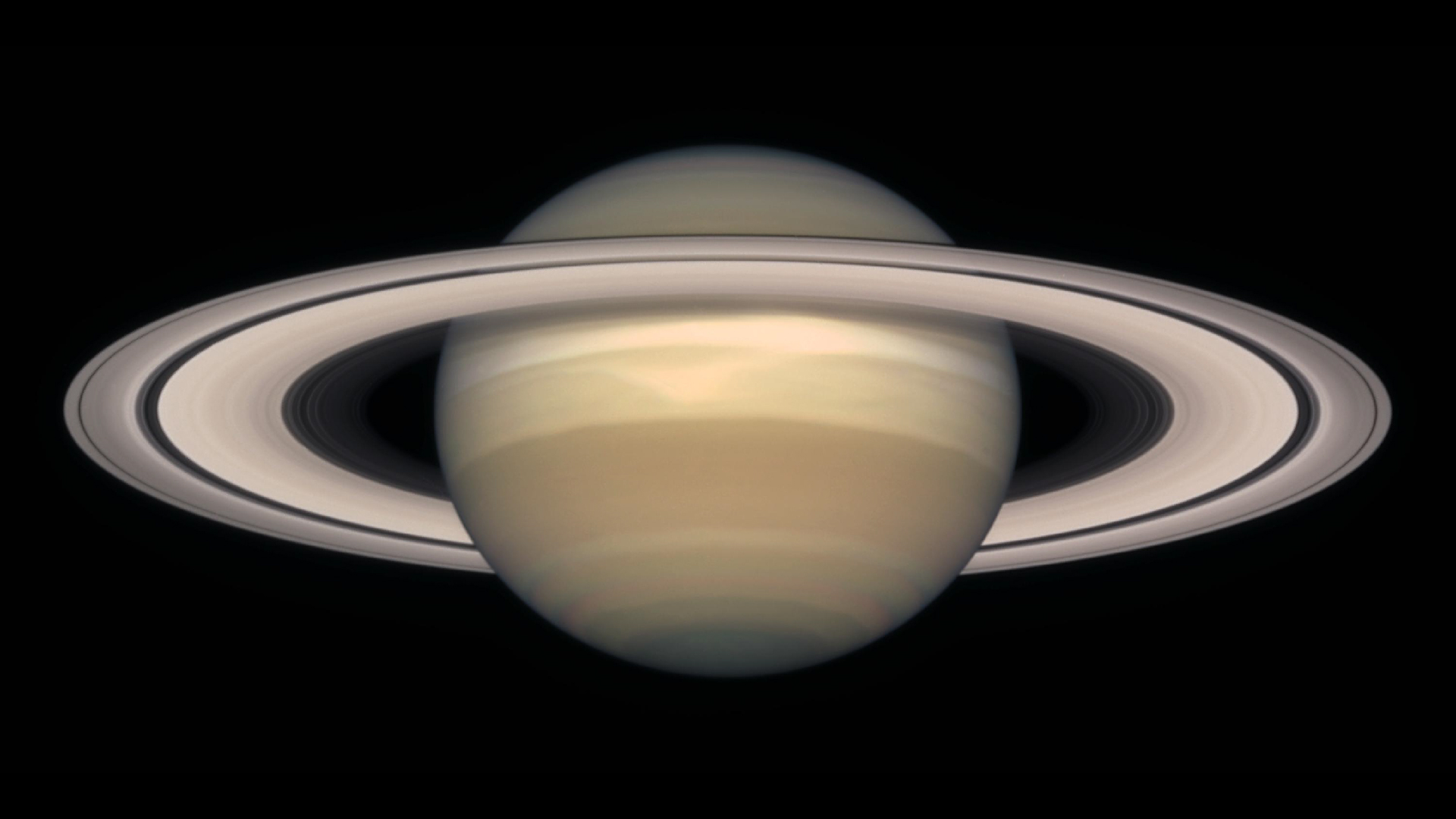By Gretchen Rundorff
Copyright livescience

Skip to main content
Close main menu
Live Science
Sign up to our newsletter
View Profile
Search Live Science
Planet Earth
Archaeology
Physics & Math
Human Behavior
Science news
Life’s Little Mysteries
Science quizzes
Newsletters
Story archive
CDC changes measles vaccine guidance
Skyscraper-sized asteroid flyby
Mysterious hand positions on Maya alter
It’s too late to stop AI, readers say
Anthropologist Ella Al-Shamahi on human origins
Don’t miss these
You can see a giant ‘hole’ shoot across Saturn this summer — and it won’t happen again until 2040
The full ‘Corn Moon’ rises this week — bringing a ‘blood moon’ lunar eclipse to most of the world
See the final ‘planet parade’ of 2025, starting this weekend
Moon, Mars, and meteors: Why July 28 is the best night for skywatching all summer
See the moon, Venus and Regulus in a rare triple conjunction tomorrow
Venus and Jupiter conjunction: The 2 brightest planets will ‘kiss’ early Tuesday morning
Nine best things to see in the night sky with binoculars: August to November 2025
How to stream Sunday’s ‘blood moon’ total lunar eclipse
Who will see the ‘blood moon’ total lunar eclipse this weekend?
The full ‘Sturgeon Moon’ rises this weekend
Asteroid Apophis flyby will be ‘once in a millennium’ opportunity for skywatchers and scientists
A blood moon is coming: Here’s what you need to know about the total lunar eclipse on Sept. 7
The Perseids are about to peak — here’s how to watch the glorious meteor shower without the full moon ruining the show
Perseid meteor shower 2025: How to see ‘shooting stars’ despite the full moon
When is the next full moon?
Saturn will be at its biggest and brightest on Sept. 21 — here’s how to see it
Gretchen Rundorff
19 September 2025
In a once-a-year event, Saturn is about to reach opposition, with the ringed planet appearing its best and brightest as it approaches its closest point to Earth.
When you purchase through links on our site, we may earn an affiliate commission. Here’s how it works.
Saturn will reach opposition on Sept. 21, meaning it will be at its closest point to Earth and appear its biggest and brightest all year.
(Image credit: NASA / Hubble)
The best time to view Saturn is almost here: On Sept. 21, the ringed planet will reach opposition, meaning Earth will be positioned directly between Saturn and the sun. (In other words, it is on the opposite side of Earth as the sun.) At that moment, the sun, Earth and Saturn will form a straight line.
During opposition, Saturn will appear to be at its biggest and brightest because the planet will be at its closest point to Earth. Similar to a full moon, Saturn will seem to be fully illuminated by the sun’s rays because of its position relative to the sun. This event happens just once every 378 days, so you won’t want to miss this opportunity to see it.
When Saturn reaches opposition, viewing conditions will be ideal. On Sept. 21, the moon will be in its new phase, so moonlight won’t threaten to wash out objects in the night sky. And because Saturn will be directly opposite the sun, the planet will be visible all night, rising in the east around sunset and setting in the west around dawn local time, according to Earth Sky.
You may like
You can see a giant ‘hole’ shoot across Saturn this summer — and it won’t happen again until 2040
The full ‘Corn Moon’ rises this week — bringing a ‘blood moon’ lunar eclipse to most of the world
See the final ‘planet parade’ of 2025, starting this weekend
To make these viewing conditions even better, observe Saturn away from sources of artificial light, which can wash out objects in the night sky and make skywatching more difficult. You’ll also want to allow 15 to 30 minutes for your eyes to adjust to the dark before you begin your observations. If you must use a flashlight, choose red light instead of white light to preserve your night vision.
Saturn will appear at the bottom of the constellation Pisces. Because the ringed planet is quite bright, it’s easy to spot in the night sky. But if you need help locating Saturn, you can use a skywatching app like Stellarium.
The best way to view Saturn is through a pair of skywatching binoculars or a backyard telescope. Through skywatching equipment, you can observe Saturn’s stunning rings, which undergo a dramatic brightening known as the Seeliger effect.
Related: A ‘crescent sunrise’ solar eclipse is coming this weekend. Here’s where to see it.
Sign up for the Live Science daily newsletter now
Get the world’s most fascinating discoveries delivered straight to your inbox.
Contact me with news and offers from other Future brandsReceive email from us on behalf of our trusted partners or sponsorsBy submitting your information you agree to the Terms & Conditions and Privacy Policy and are aged 16 or over.
When Saturn reaches opposition, the rings appear much brighter than normal because the direct sunlight reflects off the rings and eliminates shadows among the countless particles that make up Saturn’s rings, according to Astronomy Magazine. The Seeliger effect lasts a few days around the time Saturn reaches opposition.
related stories
—A rare ‘black moon’ rises this weekend: What is it, and what can you see?
—The 10 best stargazing events of 2025
—Ghostly ‘spiral’ photobombs Perseid meteors over several US states — and experts are unsure what caused it
Although the precise moment of opposition centers on Sept. 21, it takes Saturn a couple of weeks to approach and leave its position in the opposite part of the sky from the sun. So if you can’t see Saturn on the 21st, you still have some time to view the ringed planet at its biggest and brightest a day or two before and after that date.
Saturn happens to reach opposition this year on the same day that a partial solar eclipse will be visible from parts of Antarctica, Australia and New Zealand. The next day, Sept. 22, marks the autumn equinox in the Northern Hemisphere, when Earth’s seasons change and progressively longer nights for skywatching begin in the North.
Gretchen Rundorff
Live Science Contributor
Gretchen Rundorff is an astronomy enthusiast who is passionate about science communication and empowering people to learn about the night sky. She has seen multiple meteor showers, has seen a partial solar eclipse in 2016, has photographed the 2024 total solar eclipse, and has used telescopes to view planets and star clusters. Gretchen holds a bachelor’s degree in philosophy and French from the University of Pittsburgh, and a graduate-level certificate in copyediting from the University of California San Diego.
You must confirm your public display name before commenting
Please logout and then login again, you will then be prompted to enter your display name.
You can see a giant ‘hole’ shoot across Saturn this summer — and it won’t happen again until 2040
The full ‘Corn Moon’ rises this week — bringing a ‘blood moon’ lunar eclipse to most of the world
See the final ‘planet parade’ of 2025, starting this weekend
Moon, Mars, and meteors: Why July 28 is the best night for skywatching all summer
See the moon, Venus and Regulus in a rare triple conjunction tomorrow
Venus and Jupiter conjunction: The 2 brightest planets will ‘kiss’ early Tuesday morning
Latest in Saturn
Venus news, features and articles
Uranus news, features and articles
Saturn news, features and articles
There’s liquid on Titan, Saturn’s largest moon. But something’s missing and scientists are confused
Saturn: Facts about the ringed planet
There’s a weird, disappearing dark spot on Saturn’s moon Enceladus
Latest in News
Skywatching alert! See 2 bright comets on the same night as a meteor shower this October
Saturn will be at its biggest and brightest on Sept. 21 — here’s how to see it
First-ever black hole to be directly imaged has changed ‘dramatically’ in just 4 years, new study finds
CDC committee votes to change measles vaccine guidance for young children
Farewell to the computer mouse? Bizarre new designs could reduce wrist injuries, scientists say.
New report warns that China could overtake the US as top nation in space — and it could happen ‘in 5-10 years,’ expert claims
LATEST ARTICLES
Farewell to the computer mouse? Bizarre new designs could reduce wrist injuries, scientists say.
Saturn will be at its biggest and brightest on Sept. 21 — here’s how to see it
Skywatching alert! See 2 bright comets on the same night as a meteor shower this October
CDC committee votes to change measles vaccine guidance for young children
First-ever black hole to be directly imaged has changed ‘dramatically’ in just 4 years, new study finds
Live Science is part of Future US Inc, an international media group and leading digital publisher. Visit our corporate site.
Contact Future’s experts
Terms and conditions
Privacy policy
Cookies policy
Accessibility Statement
Advertise with us
Web notifications
Editorial standards
How to pitch a story to us
Future US, Inc. Full 7th Floor, 130 West 42nd Street,
Please login or signup to comment
Please wait…



